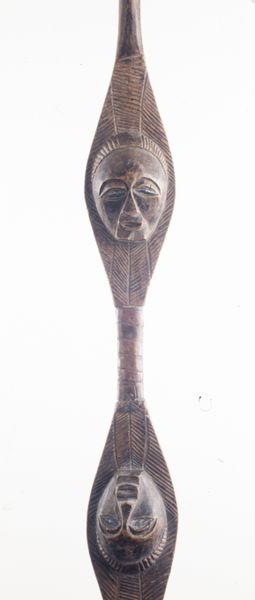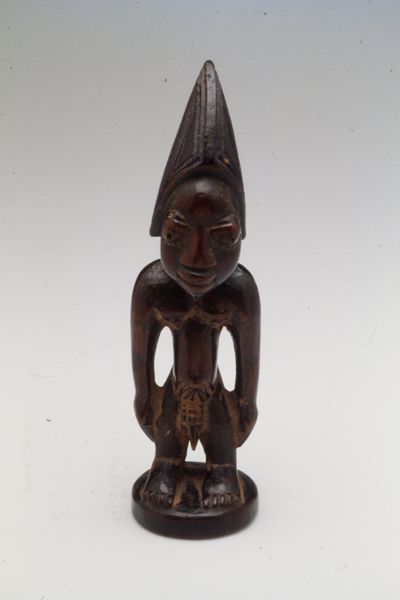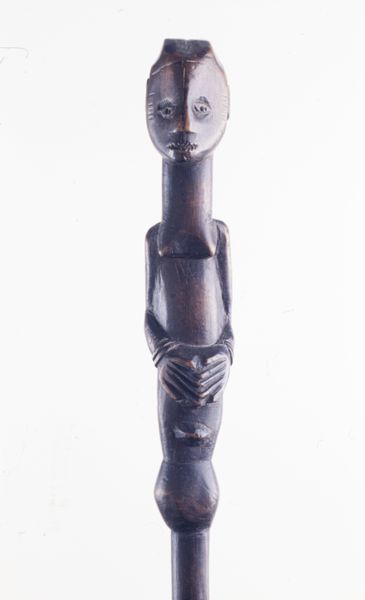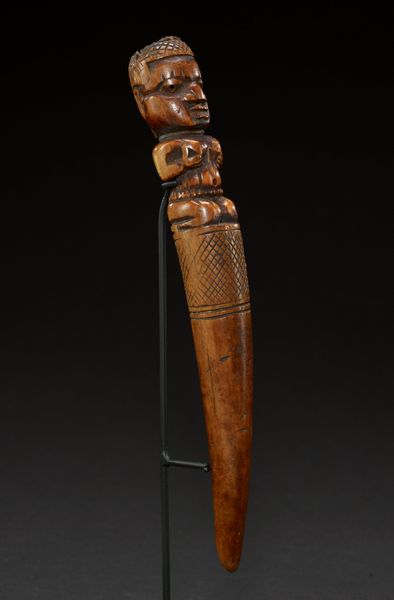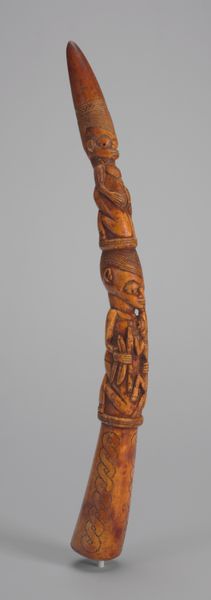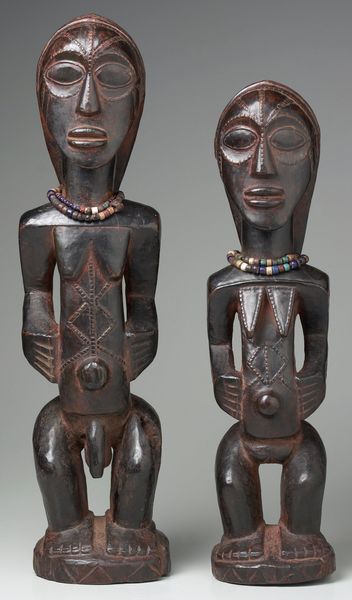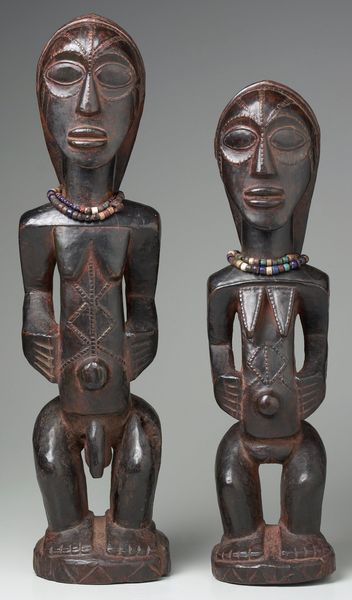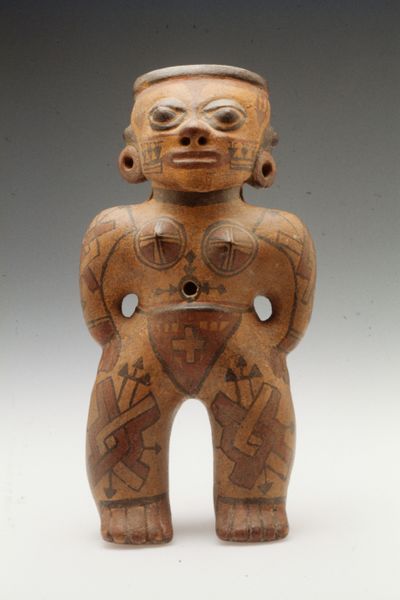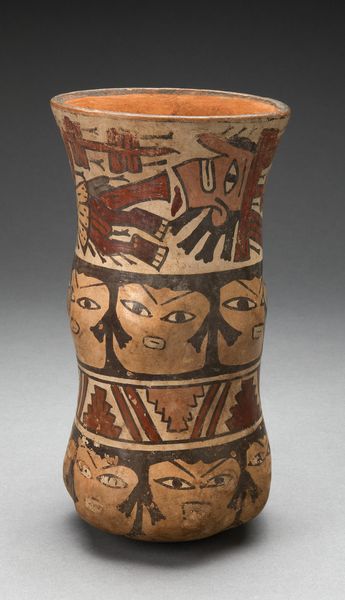
carving, sculpture, wood
#
african-art
#
carving
#
stone
#
sculpture
#
figuration
#
geometric
#
sculpture
#
wood
Dimensions: 51 x 13 1/4 x 11 7/8 in. (129.5 cm in height)
Copyright: Public Domain
Curator: Let’s consider this striking mask from the Pende people. It's entitled "Mbuya Boy's Initiation Mask" dating from approximately the 19th century. It's crafted primarily from wood and is currently held in the collection of the Minneapolis Institute of Art. Editor: Immediately, I notice the contrasting textures – the smoothness of the face against the geometric pattern of the body. The craftsmanship appears utilitarian but also considered, like it bears witness. Curator: The contrasting colors—primarily the dark browns, white and reds—create visual interest, guiding the eye to traverse the mask's surface. Consider how the abstract forms enhance the overall composition and balance. There is a careful triangulation between all shapes presented. Editor: Speaking of composition, observe the linear progression. It starts at the horned peak, then downwards via a human face to a section depicting triangles and a terminating bulb at the bottom, it really draws attention to each process undertaken in its crafting. It’s interesting how these geometric motifs coexist, the tension of design and the potential symbolism of repeated shape. What does that mean to production in the long run? Curator: It is tempting to look for symmetry. In reality there are formal divisions at play—the geometry contrasting with the smoothness of the face is perhaps speaking to the duality within human experience—initiation from youth to manhood is often disruptive and discordant. The mask performs that transition for its wearer. Editor: And I imagine each incision into the wood was a step closer, another physical connection in the rites and the initiation processes with this community. How does the physicality affect performance? What if this artwork was painted versus stripped down in its current aesthetic? I wonder if its construction serves more of a utilitarian means for a specific end or a decorative sculpture intended as some means of cultural capital. Curator: Its aesthetic draws focus to key performative aspects. We see visual signals, codes, in form. That gives us much information and asks questions about our approach to appreciating traditional formal languages. Editor: It speaks volumes on their unique production method, but I guess in tandem to their ritualistic belief system both give context to why these methods and patterns become canon for indigenous culture. Curator: A testament, certainly. And, hopefully, a valuable piece to study, considering the unique forms of artistry demonstrated here. Editor: A tactile gateway, one may add, where we look into more avenues in indigenous forms and functionality that will perhaps be adopted into other contexts within artistry in totality.
Comments
No comments
Be the first to comment and join the conversation on the ultimate creative platform.
